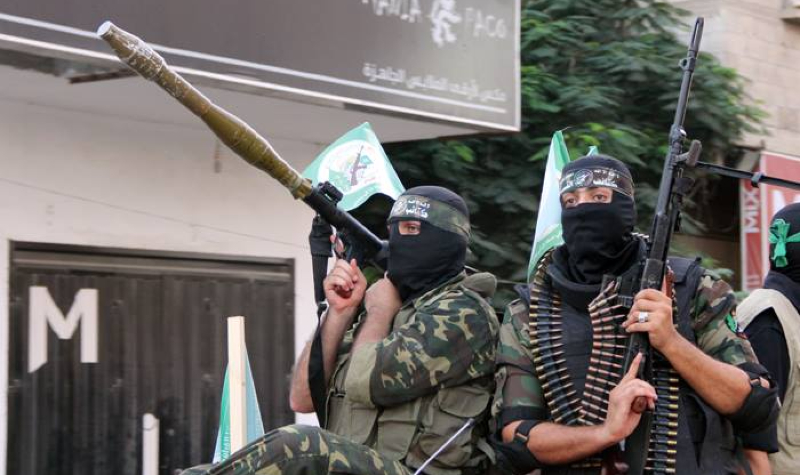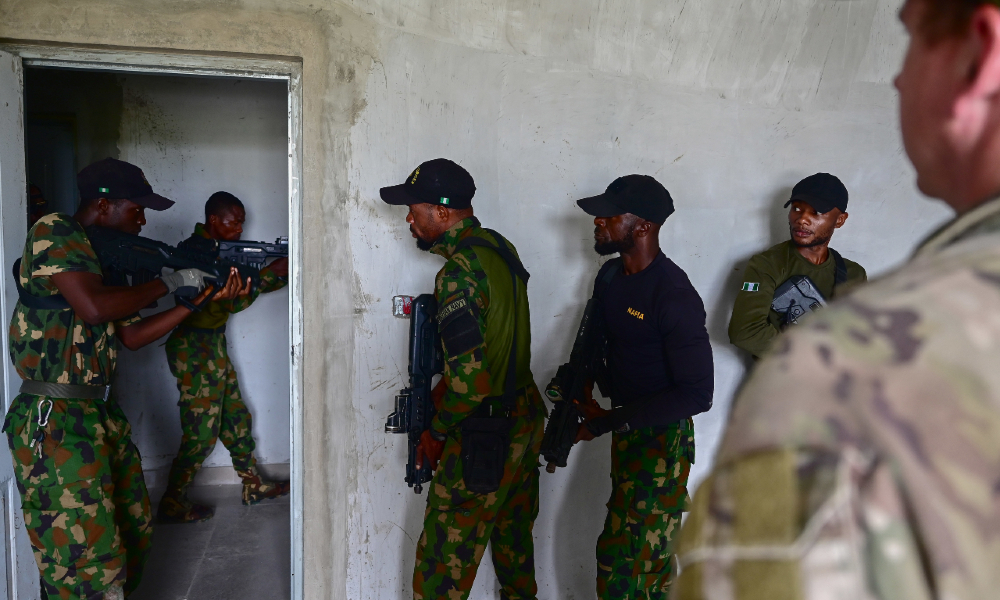Countering Hamas’s Financial Network

Published by The Lawfare Institute
in Cooperation With

Editor’s Note: Stopping the financing of terrorism is one of the most important, and most difficult, counterterrorism tasks. Jess Marin Davis, the president of Insight Threat Intelligence and my colleague at the Center for Strategic and International Studies, details the challenges in disrupting the financing of Hamas and explains what must be done to deny the group resources.
Daniel Byman
***
Hamas’s Oct. 7 terrorist attack, one of the most egregious in recent years, was enabled by the organization’s strong finance network. Hamas generates roughly $1 billion in revenues each year, some of which was sent to its armed wing to conduct this attack. Disrupting Hamas’s financing networks is critically important to prevent future attacks. And while the international community has had some success in establishing a coordinated approach to countering the financing of the Islamic State, Hamas presents a different challenge altogether.
Counterterrorist financing has five objectives: to detect terrorist networks, deny their access to funds, deter their ability to raise funds, disrupt their financing activities, and destroy their resources. Achieving these goals will be made difficult by the lack of international consensus on the status of Hamas as a terrorist group.
For the past decade (if not longer), Hamas has raised funds from four main sources. The largest source is the taxes Hamas collects on economic activities (both licit and illicit) in Gaza. This taxation activity is facilitated by Hamas’s de facto governance of Gaza, which has allowed the group to collect taxes in exchange for providing social services. The group’s status as the governing authority of Gaza also enables another source of funds: donations from Qatar, provided with the knowledge and consent of Israel and the United States. These donations have been used to pay employee salaries and provide general aid to Palestinians—activities that Hamas administers and benefits from directly or indirectly. If Hamas is ousted as the government of Gaza—the objective of the ongoing Israeli military operation—the group will struggle to raise funds through taxation but will likely continue to profit from some of the illicit activities that it facilitates, such as the movement of goods coming in through its extensive tunnel network. Qatar might still seek to provide funds to the group, but if Hamas loses control of Gaza, Doha will be pressured to suspend these payments and might look for other ways to provide aid to Gaza. Hamas’s removal as the de facto governing body of Gaza consequently would disrupt their largest sources of funds.
Iran, however, is likely to remain an important state sponsor of Hamas. Estimates of how much Iran provides to Hamas are somewhat stale, but most experts agree that this is between $80 and $100 million annually as part of its axis of resistance. Hamas also raises some funds from identity-based support networks. This includes donations from crowdfunding campaigns, with a small proportion of funds sent through cryptocurrency, but also funds diverted from international charities. Hamas also generates significant funds from its investment portfolio, much of which is in real estate in Sudan, Turkey, Algeria, and the United Arab Emirates.
State sponsorship and identity-based support networks will be difficult to detect and disrupt. They are part of Hamas’s broader facilitation network that the group uses to deploy funds for the purchase of weapons, components, and devices, and that helps to hide the movement of funds for the group. These networks need to be illuminated through careful and systematic intelligence collection and analysis, much of which will need to be financial in nature. Assets in this network need to be frozen and seized to deny Hamas access to these resources. These are already challenging aspects of counterterrorist financing that will require a serious investment of resources.
Cutting off Hamas’s financing is made more challenging by the lack of international unity on Hamas’s status as a terrorist organization. In the case of the Islamic State, progress was made in tackling the group’s finances through an international coalition. Some coalitions in place already might be able to tackle elements of Hamas’s financing—this could include action by the Terrorist Financing Targeting Center, which brings together Saudi Arabia, Qatar, Kuwait, Oman, Bahrain, and the United Arab Emirates. But Hamas holds assets in many other countries—such as Algeria, Turkey, and Sudan—that are unlikely to be as cooperative as the Gulf Cooperation Council countries in disrupting Hamas’s finance and facilitation networks. Even cooperative countries might face domestic political challenges to cracking down on Hamas’s finance networks and activities given Israel’s destructive campaign in Gaza.
Targeting Hamas’s revenue generation and facilitation networks are key parts of countering its financing, but so is identifying the management structure for the group’s network of assets. Preliminary analysis reveals that Hamas has assets and financial facilitators in at least four different countries, and probably more. Some of these individuals own or manage companies on behalf of Hamas, while others are involved in facilitating the movement of funds. Many of these individuals have been sanctioned by the United States, but significant gaps remain in the enforcement of these sanctions by other countries. While some countries, such as Algeria, Iran, Sudan, and Tunisia, might deliberately allow Hamas finance networks to operate out of both support for the group and in opposition to Israel, in other countries, the issue could be a lack of capacity to investigate and disrupt those networks. Providing training and assistance to help countries counter the financing of terrorism could make willing partners into capable partners.
Financial intelligence will play an important role in detecting Hamas’s financing activity and networks, and while some of this intelligence will come from financial intelligence units and the private sector through standard, mandatory reporting and reporting on suspicious transactions and activities, broader intelligence collection methods will be required to fully illuminate these networks. The use of human and signals intelligence focused on business and financial relationships will be critical for attributing ownership of assets by Hamas. This is not just the responsibility of the United States and Israel; the global nature of Hamas’s finance network means that this is an international counterterrorism responsibility.
Diplomatic efforts to convince states to disrupt Hamas’s financing activities will also be required. Persuading countries to participate will be difficult, particularly while the Israeli offensive is ongoing and resulting in thousands of civilian casualties. States that have not formally designated Hamas as a terrorist entity under their domestic laws will not be able to use all the tools at their disposal to disrupt the group’s financing activities. Some countries might be convinced to pursue parts of the network for other criminal or regulatory activities (such as tax evasion). Here, the Financial Action Task Force can play a role, as the threat of being placed on lists for enhanced monitoring do tend to result in some policy changes. But this is only a partial solution, as the criminalization of terrorist activity often requires a designation or listing.
Because of the centrality of the U.S. financial system, U.S. sanctions and warnings might sufficiently incentivize many financial institutions to prevent some of Hamas’s financial transactions. Institutions that facilitate transactions for designated entities risk criminal or civil penalties, as well as being designated themselves through secondary sanctions. Here, too, challenges arise. Russia and China have been establishing a secondary financial system that illicit actors take advantage of to avoid U.S. sanctions. Further, Hamas has already demonstrated an interest in transacting through cryptocurrency. While cryptocurrency is no panacea to the legal hazards of illicit finance, it does provide an alternative to the formal financial system that can be used by terrorist entities; and regulation of the sector is uneven—which creates opportunities for terrorist groups like Hamas to engage in jurisdictional arbitrage.
Regardless of the short-term outcome of Israel’s military operation in Gaza, countering Hamas’s financing is a long-term problem. The group has a resilient network of financial facilitators, investments, and revenue sources that will enable it to remain solvent for a long time to come. Serious efforts to degrade the group’s financial capabilities will require international coordination, and it will require significant time and political capital to get some partners to participate. Even states that have already designated Hamas as a terrorist group will need to be encouraged to devote resources to detecting and disrupting Hamas’s financing networks operating in, or intersecting with, their financial systems. And even then, Hamas will be able to exploit jurisdictional differences by shifting assets and operations to friendly countries. Ultimately, the short-term prospects for encouraging countries to deter Hamas financing are not very good. But inaction will have severe repercussions, as the world learned on Oct. 7.





